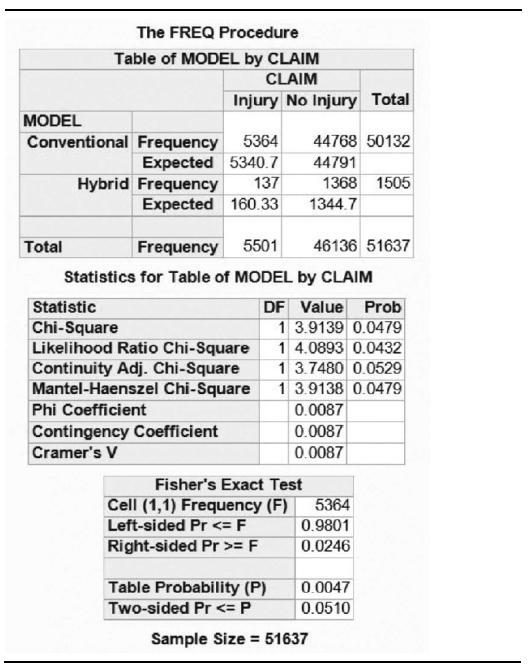According to the Highway Loss Data Institute (HLDI), hybrid [automobiles] have a safety edge over their conventional
Question:
According to the Highway Loss Data Institute (HLDI), “hybrid [automobiles] have a safety edge over their conventional twins when it comes to shielding their occupants from injuries in crashes”. (HLDI Bulletin, Sept. 2011.) Consider data collected by the HLDI on Honda Accords over the past eight years. In a sample of 50,132 collision claims for conventional Accords, 5,364 involved injuries; in a sample of 1,505 collision claims for hybrid Accords, 137 involved injuries. You want to use this information to determine whether injury rate for hybrid Accords is less than the injury rate for conventional Accords.
a. Identify the two qualitative variables measured for each Honda Accord collision claim.
b. Form a contingency table for this data, giving the number of claims in each combination of the qualitative variable categories.
c. Give Ho and Ha for testing whether injury rate for collision claims depends on Accord model (hybrid or conventional).
d. Find the expected number of claims in each cell of the contingency table, assuming that Ho is true.
e. Compute the x2 test statistic and compare your answer to the test statistic shown on the accompanying SAS printout.
f. Find the rejection region for the test using α = .05 and compare your answer to the critical value shown on the accompanying SAS printout.
g. Make the appropriate conclusion using both the rejection region method and the p-value (shown on the SAS printout).
h. Find a 95% confidence interval for the difference between the injury rates of conventional and hybrid Honda Accords. (See Section 8.10.) Use the interval to determine whether the injury rate for hybrid Accords is less than the injury rate for conventional Accords.

Step by Step Answer:

Statistics For Engineering And The Sciences
ISBN: 9781498728850
6th Edition
Authors: William M. Mendenhall, Terry L. Sincich





